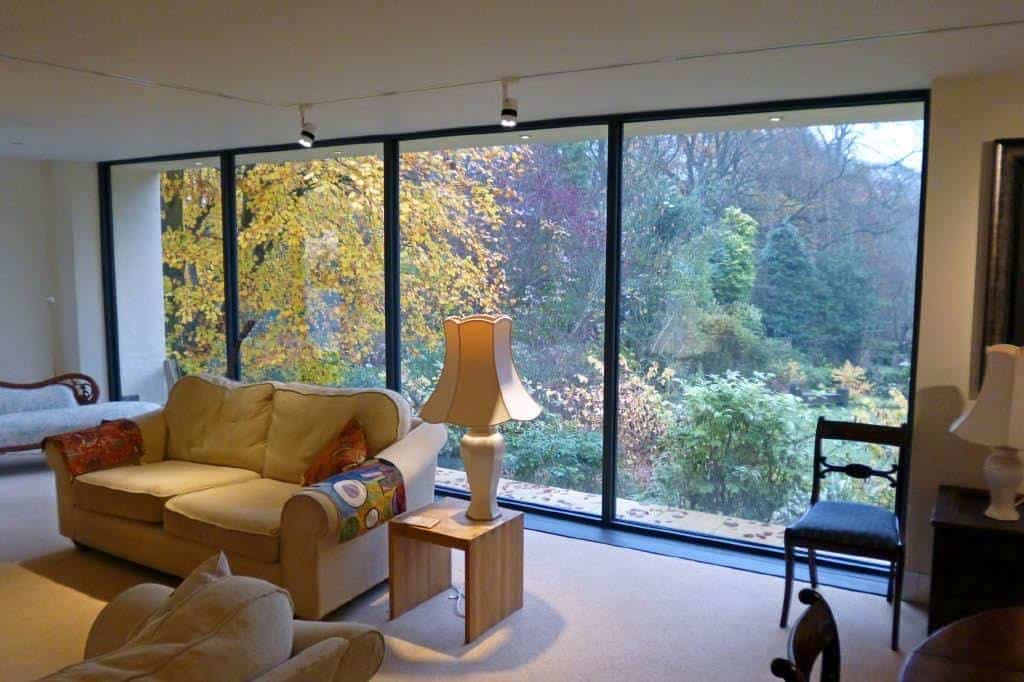Are Floor To Ceiling Windows Expensive? Floor-to-ceiling windows have become an increasingly popular architectural feature in modern homes and commercial buildings. These expansive windows offer stunning views, ample natural light, and a seamless connection to the outdoors. However, one common question that arises is whether floor-to-ceiling windows come with a hefty price tag. In this article, we will explore the cost considerations associated with floor-to-ceiling windows, helping you understand whether they are an affordable option for your home or project.

The Appeal of Floor-to-Ceiling Windows
Floor-to-ceiling windows are renowned for their aesthetic and functional benefits. Here’s why they have captured the imagination of architects and homeowners:
- Abundant Natural Light: These windows flood interiors with natural light, reducing the need for artificial lighting and creating a bright and welcoming atmosphere.
- Unobstructed Views: They provide uninterrupted views of the surroundings, whether it’s a picturesque landscape or a vibrant urban setting.
- Enhanced Space: Floor-to-ceiling windows create an illusion of larger interior spaces, making rooms feel more open and airy.
- Connection to Nature: They blur the line between indoors and outdoors, allowing you to enjoy the beauty of nature from the comfort of your home.
Factors Affecting the Cost
The cost of installing floor-to-ceiling windows can vary significantly depending on several factors:
- Window Material: The choice of window material plays a crucial role in cost. Common options include vinyl, wood, aluminum, and fiberglass. Each material comes with its own price point, with wood typically being more expensive than vinyl, for example.
- Glass Type: The type of glass used can also impact the cost. Double or triple-glazed windows, which offer better insulation and energy efficiency, tend to be more expensive than single-glazed options.
- Window Size: The larger the window, the higher the cost. Floor-to-ceiling windows, by nature, are expansive, so be prepared for a substantial investment.
- Installation Complexity: Installing floor-to-ceiling windows can be more complex than traditional window installations. The need for additional structural support, such as steel beams, can add to the overall cost.
- Location: Your geographic location can influence pricing. Cost variations may be due to local labor rates, building regulations, and climate considerations.
Budget-Friendly Alternatives
While floor-to-ceiling windows offer a luxurious and contemporary look, they may not fit everyone’s budget. However, there are alternatives to consider:
- Large Picture Windows: Large picture windows, while not floor-to-ceiling, can still offer unobstructed views and natural light. They tend to be more cost-effective.
- Sliding Glass Doors: Sliding glass doors can provide a similar indoor-outdoor connection and are often more budget-friendly than full-scale floor-to-ceiling windows.
- Transom Windows: Placing smaller transom windows above standard-sized windows can create a sense of height and openness without the expense of full floor-to-ceiling windows.
Cost vs. Value
When evaluating the cost of floor-to-ceiling windows, it’s essential to consider the long-term value they bring to your property. While the initial investment may be higher, these windows can enhance the resale value of your home, improve energy efficiency, and create a more appealing and comfortable living environment. They also provide a unique selling point if you decide to sell your home in the future.
Conclusion
Floor-to-ceiling windows offer an array of benefits, from natural light and stunning views to an enhanced sense of space. However, they can be expensive, and the overall cost depends on various factors. It’s essential to carefully assess your budget, needs, and priorities when considering these windows for your home or project. If floor-to-ceiling windows align with your vision and budget, they can be a valuable investment that transforms your living space and adds lasting value to your property.
